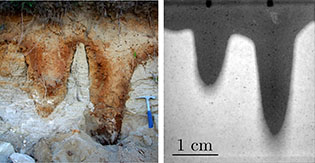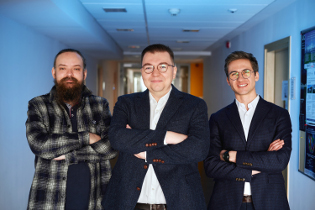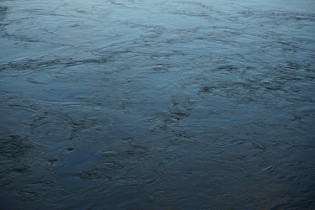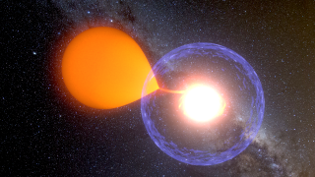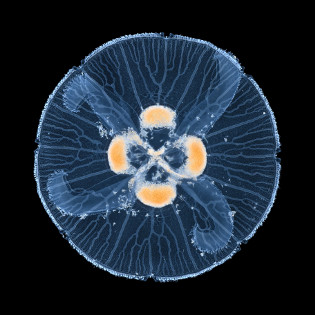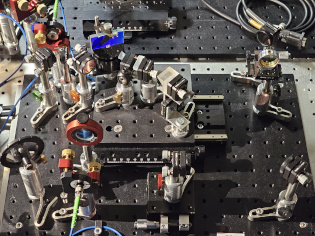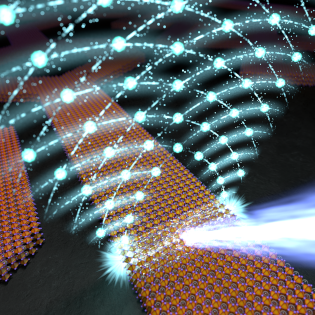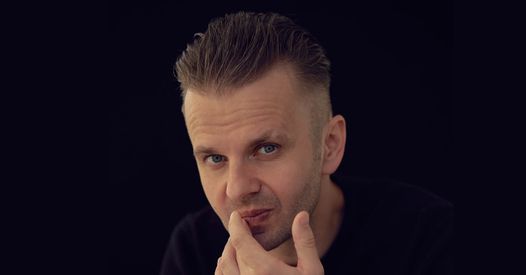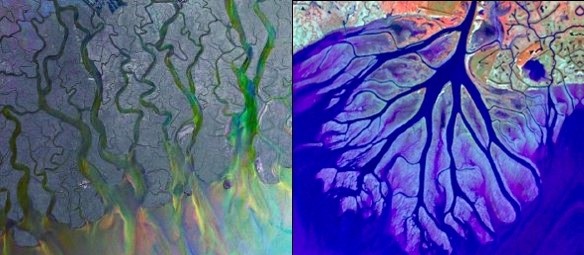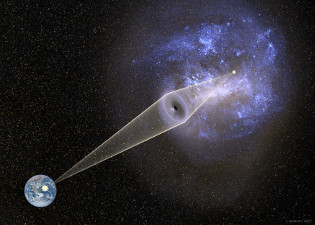Press releases
A drop hollows out the stone... and records the climate's history
2025-05-29
Water reshapes the Earth through slow, powerful erosion, carving intricate landscapes like caves and pinnacles in soluble rocks such as limestone. An international team from the Faculty of Physics at the University of Warsaw, the University of Florida, and the Institute of Earth Sciences in Orléans has discovered that vertical channels, known as karstic solution pipes, preserve a record of Earth’s climatic history. Their study, published in Physical Review Letters, reveals that these pipes evolve with time into an invariant shape, a fixed, ideal form that remains unchanged as the pipes deepen, encoding ancient rainfall patterns. | More
Quantum control of collisions beyond ultralow temperatures
2025-03-10
At ultracold temperatures, interatomic collisions are relatively simple, and their outcome can be controlled using a magnetic field. However, research by scientists led by Prof. Michal Tomza from the Faculty of Physics of the University of Warsaw and prof. Roee Ozeri from the Weizmann Institute of Science shows that this is also possible at higher temperatures. The scientists published their observations in the scientific journal “Science Advances”. | More
From classical hydrodynamics to quantum hydrodynamics and back again – how the Navier-Stokes equations describe quantum systems
2025-03-04
Although the Navier-Stokes equations are the foundation of modern hydrodynamics, adopting them to quantum systems has so far been a major challenge. Researchers from the Faculty of Physics at the University of Warsaw, Maciej Łebek, M.Sc. and Miłosz Panfil, Ph.D., Prof. UW, have shown that these equations can be generalised to quantum systems, specifically quantum liquids in which the motion of particles is restricted to one dimension. This discovery opens up new avenues for research into transport in one-dimensional quantum systems. The paper, published in the prestigious Physical Review Letters, was awarded an ‘editors’ suggestion'. | More
A new class of cosmic X-ray sources discovered
2024-12-18
An international team of astronomers, led by researchers from the Astronomical Observatory of the University of Warsaw, have identified a new class of cosmic X-ray sources. The findings have been published in „Astrophysical Journal Letters”. | More
From branches to loops. The physics of transport networks in nature.
2024-09-27
An international team of researchers from the Faculty of Physics at the University of Warsaw, the Laboratoire Matière et Systèmes Complexes, and the Institut des Sciences de la Terre d'Orléans described how loops, crucial for the stability of such networks, occur in transport networks found in nature. The researchers observed that when one branch of the network reaches the system's boundary, the interactions between the branches change drastically. Previously repelling branches, begin to attract each other, leading to the sudden formation of loops. The findings were published in the prestigious journal “Proceedings of the National Academy of Sciences”. The process described appears in a surprisingly large number of systems - from electrical discharge networks to instabilities in fluid mechanics, to biological transport networks like the canal system in the jellyfish Aurelia aurita. | More
Super-precise spectrometer enabled by latent information carried by photons
2024-09-12
Two researchers at the University of Warsaw developed a quantum-inspired super-resolving spectrometer for short pulses of light. The device designed in the Quantum Optical Devices Lab at the Centre for Quantum Optical Technologies, Centre of New Technologies and Faculty of Physics UW offers over a two-fold improvement in resolution compared to standard approaches. In the future, it can be miniaturized on a photonic chip and applied in optical and quantum networks as well as in spectroscopic studies of matter. The research has been published in the “Optica” journal. | More
Innovative perovskite waveguides with edge lasing effect
2024-08-22
Integrated photonic circuits operating at room temperature combined with optical nonlinear effects could revolutionize both classical and quantum signal processing. Scientists from the Faculty of Physics at the University of Warsaw, in collaboration* with other institutions from Poland as well as Italy, Iceland, and Australia, have demonstrated the creation of perovskite crystals with predefined shapes that can serve in nonlinear photonics as waveguides, couplers, splitters, and modulators. The research results, published in the prestigious journal Nature Materials, describe the fabrication of these innovative structures and the edge lasing effect. In particular, this effect is associated with the formation of the condensate of exciton-polaritons, which are quasiparticles behaving partly like light and partly like matter. | More
Tachyons “enfant terrible” of modern physics
2024-07-11
Tachyons are hypothetical particles that travel at speeds greater than the speed of light. These superluminal particles, are the “enfant terrible” of modern physics. Until recently, they were generally regarded as entities that did not fit into the special theory of relativity. However, a paper just published in “Physical Review D” by physicists from the University of Warsaw and the University of Oxford has shown that many of these prejudices were unfounded. Tachyons are not only not ruled out by the theory, but allow us to understand its causal structure better. | More
Fluctuations shape looping networks?
2024-07-03
Understanding how transport networks, such as river systems, form and evolve is crucial to optimizing their stability and resilience. It turns out that networks are not all alike. Tree-like structures are adequate for transport, while networks containing loops are more damage-resistant. What conditions favour the formation of loops? Researchers from the Faculty of Physics at the University of Warsaw and the University of Arkansas sought to answer this question. The findings, published in “Physical Review Letters,” show that networks tend to form stable loop structures when flow fluctuations are appropriately tuned. This finding will allow us to understand the structure of dynamic transport networks better. | More
Is dark matter made of black holes?
2024-06-24
Gravitational wave detectors, LIGO and Virgo, have detected a population of massive black holes whose origin is one of the biggest mysteries in modern astronomy. According to one hypothesis, these objects may have formed in the very early Universe and may compose dark matter, a mysterious substance filling the Universe. A team of scientists from the OGLE (Optical Gravitational Lensing Experiment) survey from the Astronomical Observatory of the University of Warsaw have announced the results of nearly 20-year-long observations indicating that such massive black holes may comprise at most a few percent of dark matter. Another explanation, therefore, is needed for gravitational wave sources. The results of the study were published in two articles, in Nature and the Astrophysical Journal Supplement Series. | More






